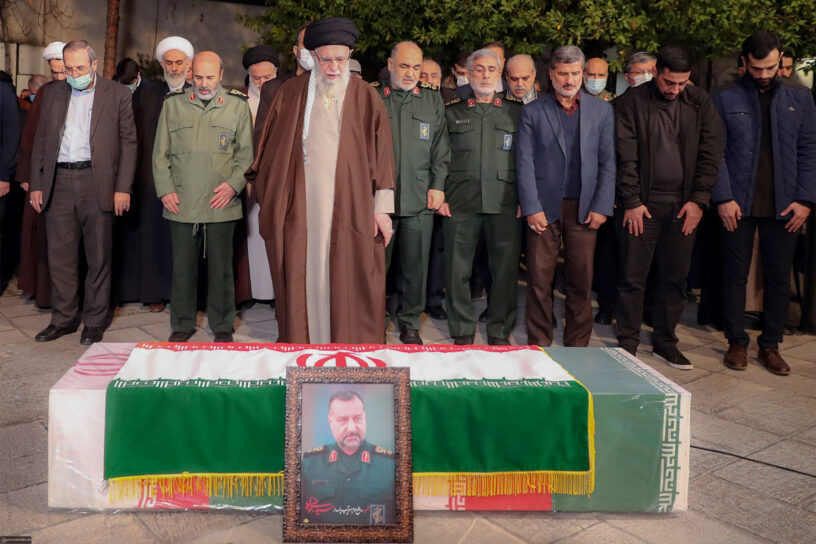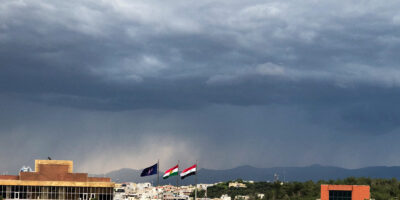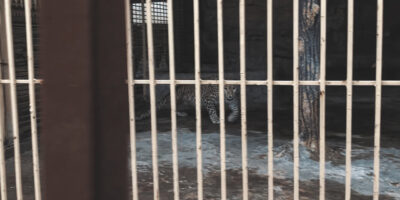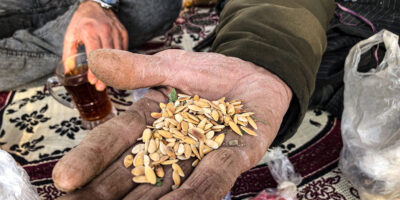For Iran’s Supreme Leader Ali Khamenei, the revolutionary image of the Islamic Republic is everything. He is renowned for not backing down under international pressure even if that means isolation on the world stage or killing large numbers of Iranians over issues such as the hijab. However, that image has been seriously damaged following the October 7 attack by Hamas, as Tehran has relied on anti-Zionist rhetoric while doing nothing in the face of Israel killing Iranian commanders in Syria. Khamenei is now facing a backlash, even from his hardcore supporters.
“If you don’t hit them, they’ll hit you,” many frustrated pro-regime activists have said on Twitter in recent weeks. One journalist went as far as saying that Iranians should not prevent Yemen’s Houthis from striking back: “You are obviously not capable of this task, and always looking for the appropriate time and location. Let those who are capable hit them hard.”
“Do not get carried away and do not move faster than the supreme leader,” another pro-regime activist cautioned. “Follow his orders… and rest assured, revenge is coming.”
Up until early December, Iran had dodged the bullet of its failure to support its ally Hamas against Israel. Tehran claimed that it had not been informed in advance about the October 7 attack and that Hamas was able to fight Israel on its own. While Tehran did nothing, it talked a lot. Many Iranian officials, including Khamenei, declared that this war would be the end of Israel and the Jewish state would be wiped out.
Even Iran’s main proxy group Hezbollah carried out limited strikes against northern Israeli settlements, preferring not to escalate the situation into a full blown regional war.
In December, however, Israel escalated its targeting of Islamic Revolutionary Guard Corps (IRGC) commanders in Syria, something it has been doing for years but brought to a new level.
The IRGC in early December announced that two of its senior advisers were killed by Israel in Syria. The IRGC statement did not mention retaliation against Israel.
Then came the December 25 killing of the lynchpin of Iran’s coordination with resistance groups across the region. Sayyed Razi Mousavi was perhaps the most senior operational commander of the IRGC’s external arm, the Quds Force, and was described as a second Qassem Soleimani. The IRGC threatened that the “Zionist regime” would pay the price for this “crime” and Khamenei himself led the funeral prayer over Mousavi’s body in Tehran.
All the factions within the so-called Resistance Axis sent their condolences to Iran and vowed to avenge his blood. Senior IRGC commander Mohammad Jafar Assadi, who fought alongside Mousavi, said that he was the subject of multiple failed assassination attempts by Israel, but this time the Israelis “because of their spies, managed to pinpoint his exact location.”
Israel continued its killing of commanders who were close to Qassem Soleimani. The next on the list was Saleh al-Arouri of Hamas on January 2. He was considered close to Iran even by Hamas standards.
The calls for revenge grew even louder with the killing of Arouri. But the following day, two explosions ripped through crowds of mourners who were visiting Qassem Soleimani’s grave on the fourth anniversary of his killing. The twin bombings killed close to 90 people, including children, and wounded nearly 300 more. Many regime loyalists were quick to blame Israel and begged authorities in Tehran to strike back. In the end, the Islamic State (ISIS) took responsibility for the attack.
When it needed to retaliate in the past, Tehran often fired missiles at the Kurdistan Region, claiming it hosted Israel’s Mossad or accusing Kurdish opposition groups based in the Kurdistan Region of being agents of Israel. These kinds of strikes often satisfied the hardcore pro-regime camp. But that option does not appear to be available to Iran anymore as the IRGC has already managed to pacify threats from the Kurdish opposition groups. Kurdish officials have also been quick to condemn the attacks and offer their condolences.
Meanwhile Israel says that its high intensity war in the north of Gaza is nearing its end and this will release more assets to focus on Hezbollah and other militia groups, including IRGC advisers in Syria. On Monday, three days after Hezbollah Secretary General Hassan Nasrallah threatened Israel with retaliation for Arouri’s killing, Israel killed another top militia commander Wassim al-Taweel (Haj Jawad) of Hezbollah.
Khamenei appears to be facing an insurmountable challenge. He knows that he will have to take action sooner rather than later against Israel if he wants to keep cohesion within his hardline camp in case of another challenge to his regime, similar to the Jin Jiyan Azadi protests of September 2022. But he also knows if he hits Israel directly, he would play right into the hands of Prime Minister Benjamin Netanyahu who wants to draw Americans into a direct confrontation with Iran.
The clock is ticking and the pressure is mounting on Khamenei to take action. It is only a matter of time before Israel strikes again.




